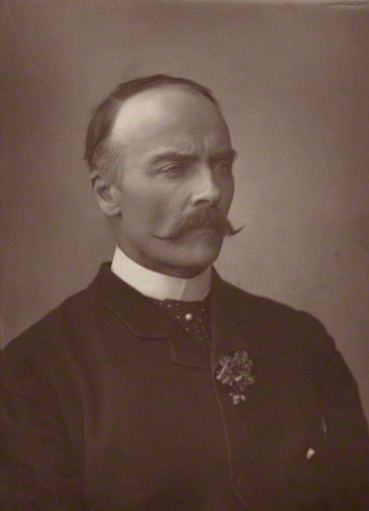Preceded by Constituency created Role Politician Rank Lieutenant colonel Name Edward Saunderson | Spouse(s) Helena Emily Citizenship British Parents Alexander Saunderson | |
 | ||
Preceded by James MaxwellHugh Annesley Succeeded by Walter Long, 1st Viscount Long | ||
Colonel Edward James Saunderson PC, JP, DL (1 October 1837 – 21 October 1906) was an Anglo-Irish landowner and prominent Irish unionist politician. He led the Irish Unionist Party between 1891 and 1906.
Contents

Early life and family
Saunderson was born at the family seat of Castle Saunderson in County Cavan. He was the younger son of Colonel Alexander Saunderson, who served as the Tory Member of Parliament (MP) for Cavan, and Hon. Sarah Juliana Maxwell. He was the grandson of Henry Maxwell, 6th Baron Farnham. The Irish Saundersons were a 17th-century branch of an old family, originally from Durham; a Lincolnshire branch, the Saundersons of Saxby, held the titles of Viscount Castleton (Irish: c. 1628) and Baron Saunderson (British: c. 1714) up to 1723. Saunderson was educated abroad, mostly in Nice by private tutors, and inherited his father's Cavan estates following his death in 1857.
On 22 June 1865 he married Hon. Helena Emily de Moleyns, a daughter of Thomas Townsend Aremberg de Moleyns, 3rd Baron Ventry. Together the couple had four sons and a daughter. Two of his sons were British Army officers. In 1947, his grandson, Alexander, married Princess Louise, great-granddaughter of Titanic victim, John Jacob Astor IV, and the ex-wife of two different Georgian Mdivani princes.
In his private life, Saunderson was well known as a keen yachtsman, and his character was deeply marked by stern religious feeling. He was a devout Evangelical Anglican.
Career
Saunderson was first elected to the Parliament of the United Kingdom as the Palmerstonian Liberal member for Cavan in 1865. In 1869, he became a Conservative. Other than opposing the disestablishment of the Irish church in 1869, he otherwise gave little sign of political interest or activity at this stage. Saunderson lost his seat to the Home Rule League candidates, Joseph Biggar and Charles Joseph Fay, at the 1874 general election. In 1885 he stood again for parliament and was elected as a Conservative for the North Armagh constituency. By this stage, he had become a prominent figure in the Orange Order and in the unionist political movement. He retained his North Armagh seat in the 1886 election. He was subsequently involved in organising the establishment of the Irish Unionist Alliance (IUA), a political party which sought to unite the unionist movement across Ireland. He became the IUA's first leader in 1891, a position which he held until his death. Saunderson became known for his uncompromising speeches in the House of Commons, and he was nicknamed 'the Dancing Dervish' by friends and opponents. He was invested as a member of the Privy Council of the United Kingdom in 1898 in recognition of his political service.
Saunderson had entered the Cavan militia (4th battalion Royal Irish Fusiliers) in 1862, and was made a major in 1875. He became a colonel in 1886 and was in command of the battalion from 1891 to 1893. In March 1893, Saunderson was one of the signatories of the manifesto of the Ulster Defence Union, launched to organise resistance to the Second Home Rule Bill of 1893.
He was a Justice of the Peace and Deputy Lieutenant for Cavan, and was appointed High Sheriff of Cavan in 1859. He served as the grand master of the Orange Order lodge in Belfast from 1901 to 1903. He died of pneumonia in 1906 and a statue, erected by public subscription, was unveiled at Portadown in 1910.
